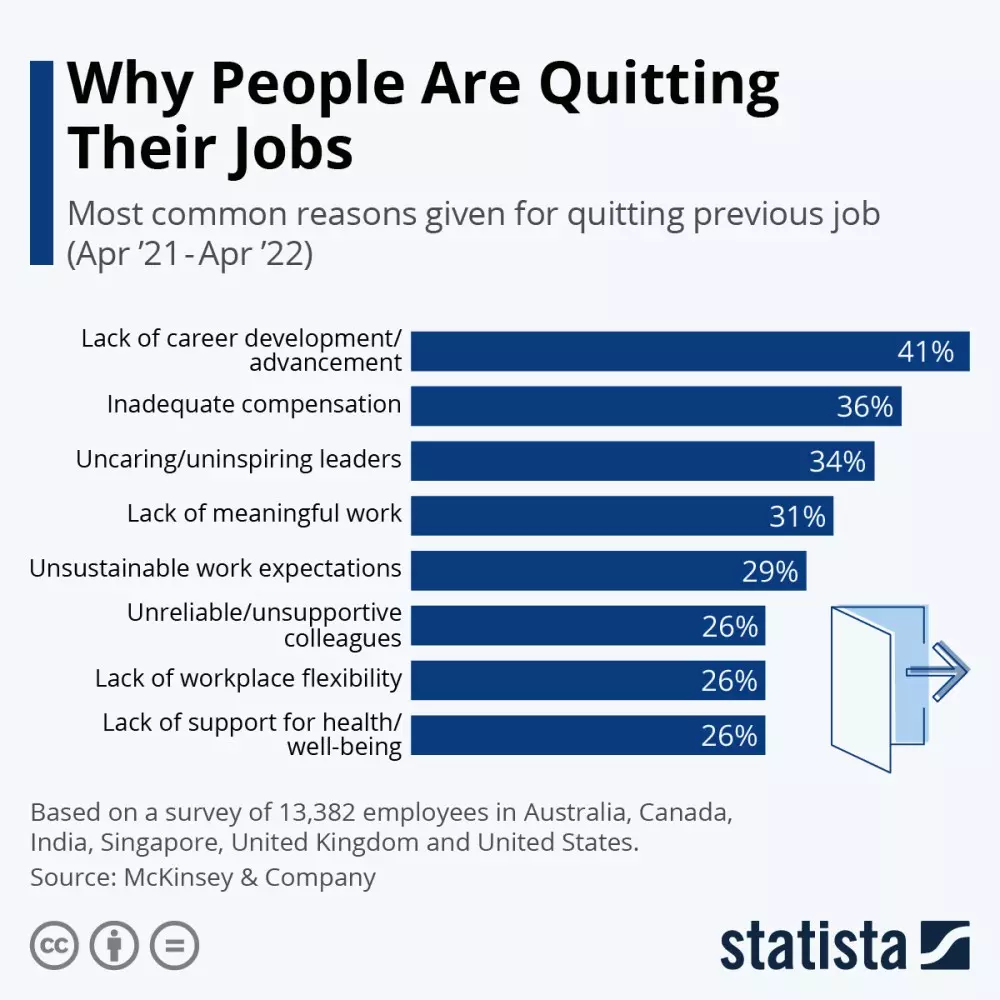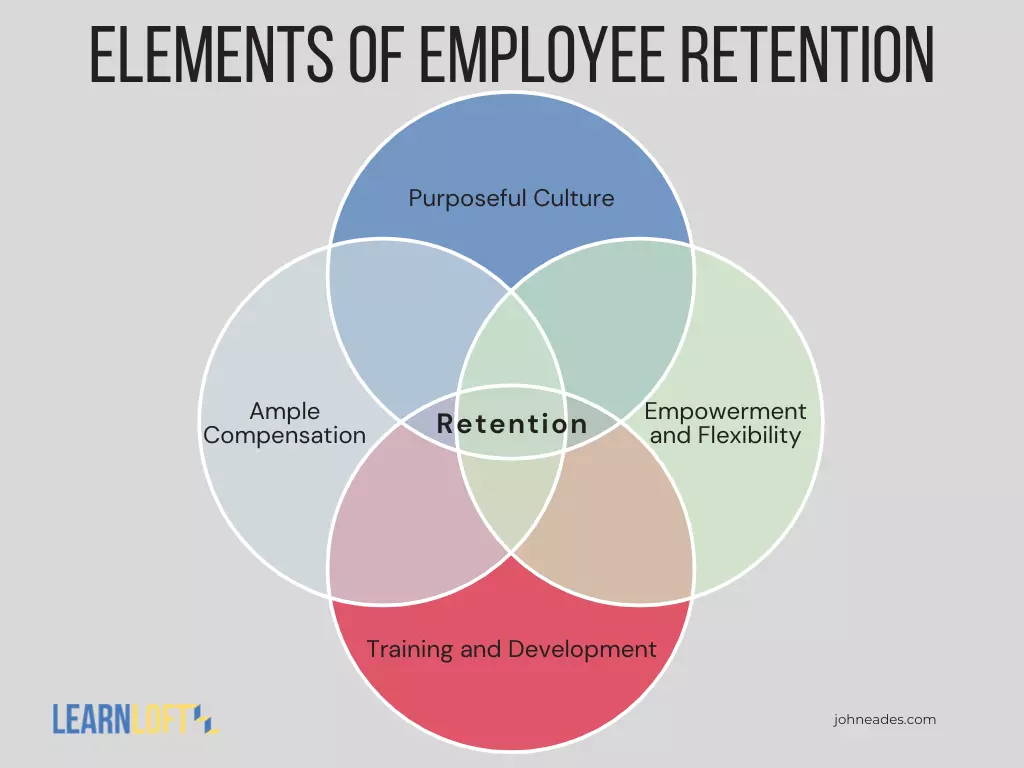Comments
- No comments found

Employees quit for various reasons, including dissatisfaction with their job, lack of growth opportunities, poor work-life balance, and ineffective leadership.
The best leaders are adapting by implementing strategies to address these issues, such as offering professional development opportunities, creating a positive work culture, providing flexible work arrangements, and actively listening to employees' concerns to improve their overall experience in the workplace. By understanding the reasons why employees leave and taking proactive measures to address them, leaders can increase employee retention and create a more engaged and productive workforce.
It used to be that employees just wanted a good job with a steady paycheck. Many would sacrifice their passions and tolerate an average job. However, thanks to a strong employment run and the rapid advancement of the gig economy, the veil of scarcity job thinking has turned into abundant job thinking by many professionals.
The power of employment is now in the hands of talented professionals, and the best companies recognize it. Whether you call it the "Great Resignation" or "Quit Quitting," there is no doubt this is the time period of the professional. Research by McKinsey suggests that 40% of employees are considering quitting their jobs in the next 3 to 6 months. Most professionals who have left or are thinking about it aren't walking away for a small pay raise. Instead, they are focused on moving towards something better. They move toward leaders and companies who care about them and intersect with their passions and purpose.
Professionals are moving toward leaders who care about them and companies that intersect with their passions and purpose.
Employees quit jobs for many different reasons. Many people believe, that "people don't leave companies, they leave managers." While this isn't always the case, one of the primary reasons people leave is because of a bad boss.
McKinsey's research of why people quit highlights what I call "The Big Three."
Lack of Career Development / Advancement
Inadequate Compensation
Uncaring / Uninspiring Leaders

None of these by themselves are shocking or insightful. However, in my work coaching leaders and helping build organizational culture, people often leave when these three interact. You can think of it this way; people are much more likely to quit when they have an uncaring/uninspiring leader and are inadequately compensated. Or they lack career development/advancement and have an uncaring /uninspiring leader.
Employees leave when two or more reasons they would quit interact with each other.
While no company or leader is perfect, the best organizations know employee retention is a great business practice. On average, employee turnover costs organizations between 1x-2x a year's salary once they have been in the organization for over three years. A Google study found that the average employee that turns over within one year costs about $50,000. The cost of turnover is expensive, and retention is essential.
However, in the current talent market, retaining high performers and great team players deserves a dedicated strategy corporately and implemented by each manager. Because the best leaders build systems as if their employees will stay forever, even though they know it isn't true.
Build retention strategies as if employees will stay forever.
As a leadership coach and consultant, I have the privilege of sitting in the front row as companies bare the truth about their recruiting and retention techniques and strategies. More often than not, companies focus more on recruiting than retention. While recruiting talented people is an essential element of leadership, the best leaders focus more on retention than recruiting because fulfilled employees do a lot of recruiting because they are raving fans of the company.
The best leaders focus more on retention than recruiting.
The best retention strategies revolve around four key elements:

Purposeful Culture - Provide meaningful work and make people feel like they belong to something bigger than themselves.
Training and Development - Invest in managers' development so they can lead more effectively. Provide learning opportunities for all employees to create a learning culture and partner with experts such as CJPI, who can help you identify ways to move forward and empower employees and leaders to improve performance.
Ample Compensation - Compensation that exceeds the average pay by industry average and exceeds personal needs.
Empowerment and Flexibility - Create an environment that allows employees to take ownership of their work, decision making, and schedule.
The "how-to" strategies to improve retention around creating a purposeful culture, providing training and development opportunities, giving ample compensation, and sharing empowerment and flexibility are endless. If you want to know if you're doing a good job, look for these as proof:
Leadership development programs
Best-in-class technology tools
Core values designed and discussed
Culture of coaching and mentoring
I hope that instead of blaming, complaining, and acting as if people are disposable, you will do your part to make a difference in people right where you are. Use the opportunities in front of you to "bloom where you are planted" because that's exactly what the best leaders do.
John is the CEO of LearnLoft, author of, F.M.L. Standing Out & Being a Leader and host of the 'Follow My Lead' Podcast. He writes or has been featured on Inc.com, LinkedIn Pulse, TrainingIndustry.com, eLearningIndustry.com, CNBC Money, and more. John completed his education at the University of Maryland College.
Leave your comments
Post comment as a guest